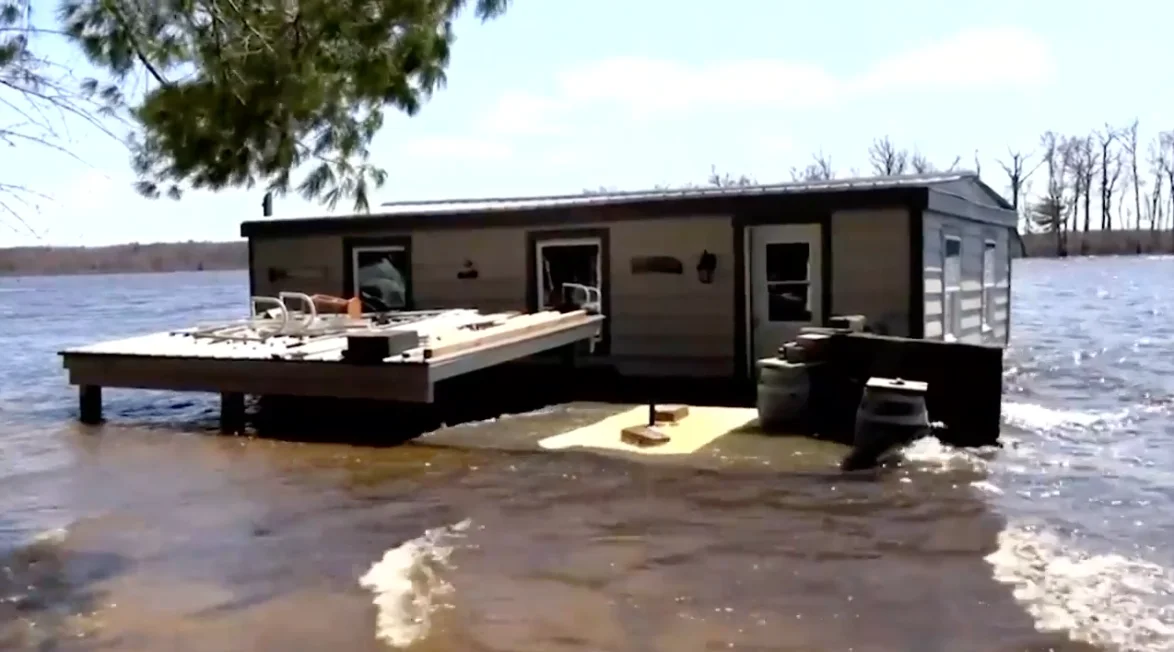
Spring is just around the corner and so is wet weather
Canada’s spring forecast is out and it looks like it’s going to be a wet one in some parts of the country.
Spring-like temperatures are definitely welcomed, but with the change of weather comes melting snow and ice, torrential rains, and rising waters—and that can bring unwelcome flooding.
Here’s how to be prepared for the spring flood season:
Be #FloodReady. We’re not just talking about swapping out your winter boots for rubber boots! Flooding is an increasingly common and very costly natural disaster and one that many Canadian homeowners aren’t ready for, especially when it comes to property damage and out-of-pocket costs.
Don’t wait for the water. Get flood smart and help everyone around you do the same. In the face of rising flood risk and a changing climate, coming together in your community is key to protecting homes and families and each another. Share the responsibility.
Understand the flood risks in your community. Older neighbourhoods have a better historical knowledge of regular flooding, however, newer neighbourhoods can still be at risk. Nearby waterways, drainage issues, and complaints of wet basements are all risk factors that need to be taken into account.
Put flood-readiness at top of your agenda at your next community association meeting. Inspire neighbours to come together with a flood-prep pep talk, and collectively drive action by sharing #FloodReady information on community social media and email lists.
We’re all in this together, including your municipal government. Many communities offer educational or infrastructure programs to help residents–take it upon yourself to get this information and share it with members of your community.
Canada.ca/Flood-Ready offers up excellent information, tips, and resources, including posters that’ll help your community be more #FloodReady. In addition, check out their important flood-ready fixes that we can all do to our homes now to reduce potentially expensive flood damage later.
Keep eavestroughs clear and draining properly. Make sure your downspouts extend at least 2 m (6’) from the basement walls. Ensure there is proper grading so water drains away from the home.
Put sealant around basement windows and the base of ground-level doors. Make sure all basement floor drains are not blocked. Raise large appliances in the basement and secure furnaces, water heaters, and/or oil tanks so they won’t tip in a flood.
Talk to your insurance company. Did you know that residential overland flooding is often not covered by most standard insurance policies? Talk to your insurer to see if you are covered for water flowing above ground and seeping in through windows, doors, and cracks. Overland flood insurance has only become widely available in the last couple of years. Share this information with your neighbours so they’re not swamped with misinformation that could leave them drowning in debt from flooding.
Almost two million households in Canada are at “very high risk” of flooding. Federal disaster relief has almost doubled over the last few years and it’s projected to rise to as much as $650 million annually. Remember—floods can occur in any region of Canada, at any time of year.
Climate change scientists report that severe rain storms are only going to increase in frequency and severity so take the time now to be emergency ready. Follow Public Safety Canada’s social media accounts on Twitter (@Get_Prepared) and on Facebook (@EmergencyReadyinCanada).









